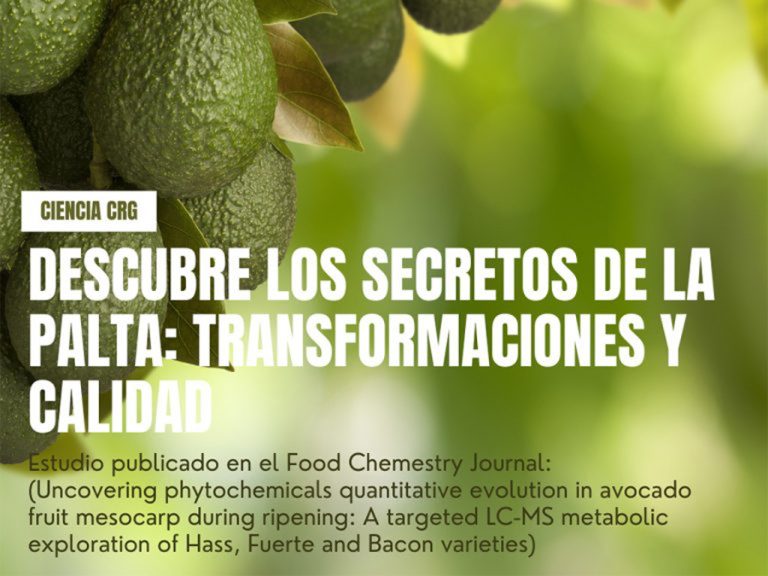Have you ever wondered why avocados are so delicious when they are ripe? The ripening process of avocado involves complex physicochemical transformations that result in the desirable characteristics for consumption. But did you know that this process affects different metabolites differently, and that it depends on the type of avocado?
In a recent study published in the Food Chemistry Journal, conducted by researchers from the University of Granada and other Spanish researchers in collaboration with Dr. Romina Pedreschi’s lab at PUCV, an advanced liquid chromatography-mass spectrometry (LC-MS) technique was used to analyze 30 different metabolites in avocado pulp, from unripe to ripe stages. These metabolites include phenolic compounds, amino acids, nucleosides, vitamins, phytohormones, and related compounds. Three commercial varieties of avocado were examined: Hass, Fuerte, and Bacon.
Statistical analysis revealed significant variations between the different avocado varieties, leading to the identification of potential markers that differentiate each variety. Most metabolites showed dynamic quantitative changes throughout ripening. For example, although most phenolic compounds increased during ripening, there were exceptions such as epicatechin and chlorogenic acid.
Amino acids and their derivatives showed a highly cultivar-dependent evolution, with the Fuerte variety showing the highest concentrations and most pronounced fluctuations. On the other hand, uridine and abscisic acid levels consistently increased during ripening in all varieties. Several compounds characteristic of the Bacon variety were identified but require further research for identification and role elucidation.
This study helps us better understand how different types of avocado change as they ripen, and how these changes influence the product we consume. So, next time you enjoy an avocado, you can appreciate not only its delicious taste but also the science behind its ripening process.
Interested in learning more about how science enhances our food experience?
